Have you ever stopped to wonder what the world looks like beyond the naked eye? Well, grab your microscope and get ready to be amazed! The everyday objects that we encounter in our daily lives can turn into something truly incredible when viewed through the lens of a microscope. From the wispy fibers of a pencil lead to the intricate patterns on a butterfly’s wing, the microscopic world is full of wonders waiting to be discovered. In this article, we’ll take a closer look at some of the most fascinating transformations of common household items under the microscope.
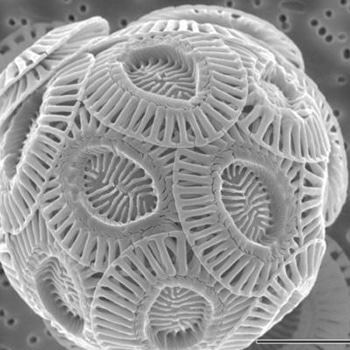
Chalk Looks This Cool And It’s Millions of Years Old?
Most of us have picked up a piece of chalk and written something on a blackboard. Chalk was used way before our grandparent’s time as a way to teach a math lesson or explain a moment in history. It was created between 99 and 65 million years ago, during the Cretaceous Period. Kids at recess also used chalk to create hopscotch as a way to pass the time. At its normal size, chalk looks like nothing more than sand. The most exciting part about chalk is what you can write with it on a blackboard. But underneath a microscope, chalk turns into an object that looks like it’s from the planet Mars. Chalk is made of the shells of dead microscopic organisms like foraminifera and sea algae (Geology.com).
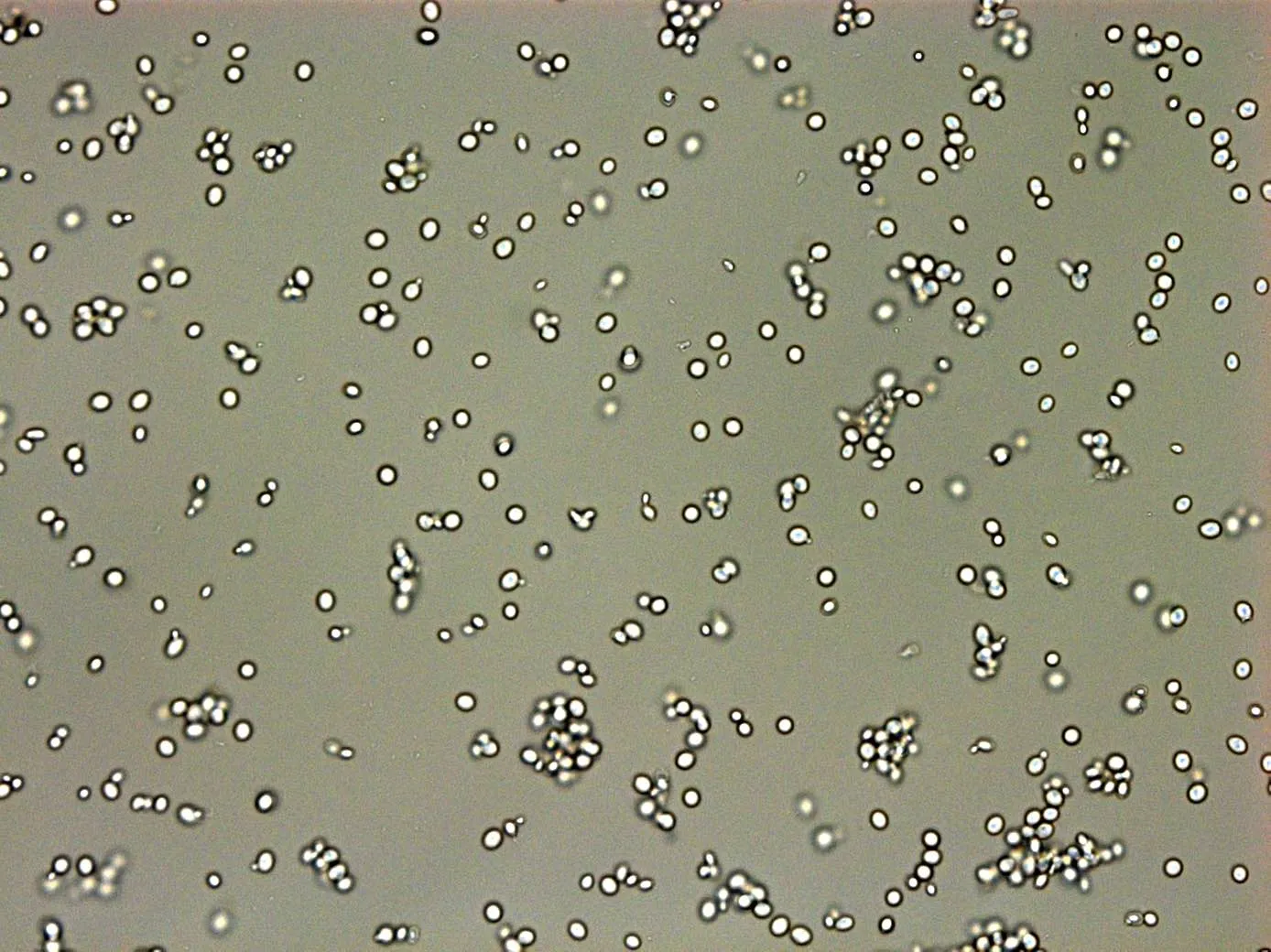
Yeast Cells: Funny Fungus, Delicious Results
Yeast is a funny little fungus that’s responsible for making all kinds of delicious things, like bread and beer. It’s kind of like the Willy Wonka of the microbial world, turning sugars into alcohol and carbon dioxide through the magic of fermentation. There are over 1,500 species of yeast out there, but the most famous one is probably Saccharomyces cerevisiae, which has been helping humans get their bake and brew on for centuries. In fact, some yeast is so hardcore that it can survive in the depths of the ocean and in polar ice caps. (RSS Science)
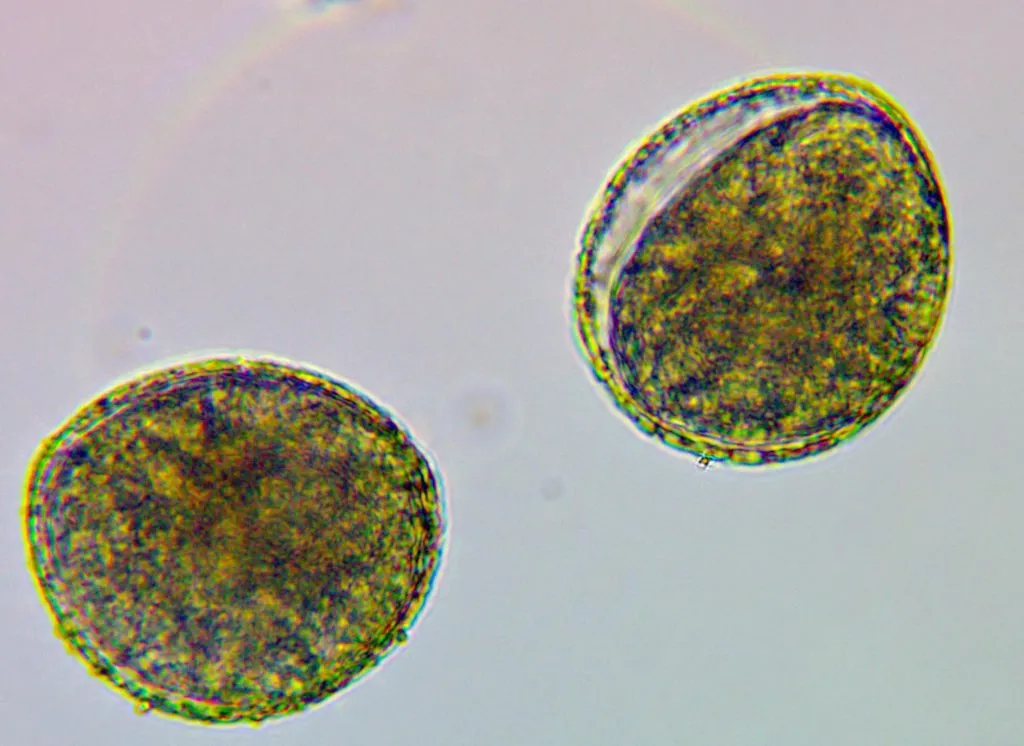
Knowing More About Pollen Feels Kind Of Dirty…
Pollen, the tiny grains produced by plants for reproduction, is a real miracle of nature. It’s like the plant world’s version of sperm, but instead of swimming through a cervix, it gets carried around by bees and other pollinators. And just like human sperm, pollen is super tiny and lightweight, which is why it’s able to float through the air and land on other plants. When it gets inhaled, it can cause all kinds of sniffling, sneezing, and itchy eyes. (ACAAI)
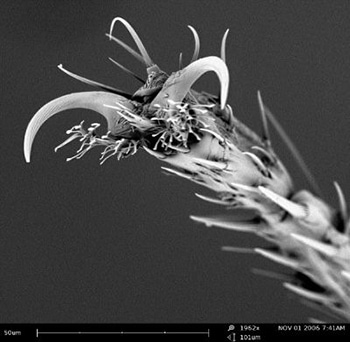
Fruit Fly Feet Are The Things of Nightmares
Looking at insects under the microscope will probably make you want to run away from them even more. Fruit flies can be a real annoyance – but this close up turns them from annoyance to nightmare. Looking at the feet of a fruit fly up close makes you realize those little, tiny, microscopic feet could probably mess you up if they were one-hundred times the size. Did you know that fruit flies are attracted to fermented fruit and other substances because they can sense the presence of alcohol? This is because they have special sensors on their antennae that allow them to detect the presence of ethanol, which is produced during the fermentation process. In fact, fruit flies have been used in scientific research to study the effects of alcohol on behavior. (Terro)
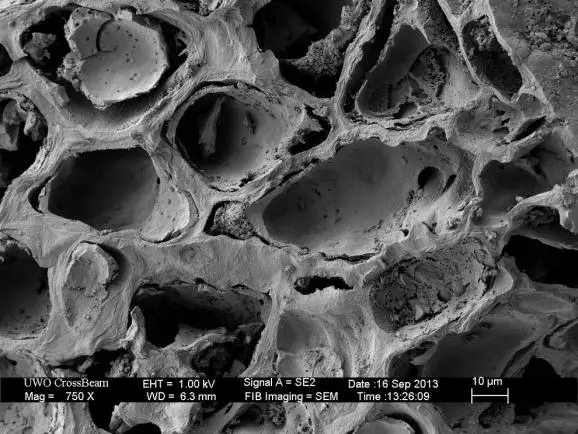
You May Be A Coffee Lover, But You Probably Don’t Know This About Coffee Beans
So many people rely on coffee to make it through their days. But very few know more about coffee than how to brew and pour it. Underneath a microscope, coffee beans look like craters from Mars or the moon. Coffee beans are actually seeds. They come from the fruit of the coffee plant, which is called a coffee cherry. The aroma of freshly roasted coffee beans has been shown to improve mood and cognitive function in some people. And many people take advantage of these benefits. The average American consumes about three cups of coffee per day, making it one of the most popular beverages in the country (Futurism).
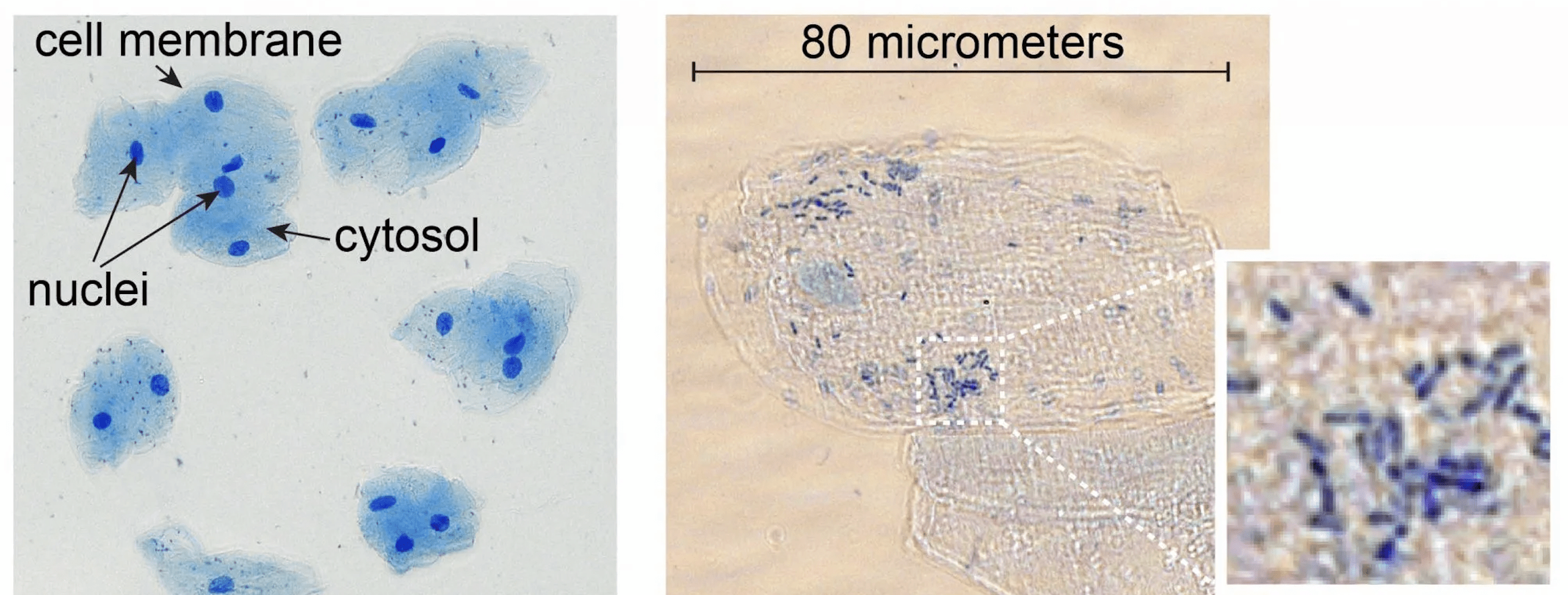
Cheek Cells Are Basically Mini Bouncy Castles
Did you know that your cheek cells are actually mini bouncy castles for your body’s tiny party animals? That’s right, these epithelial cells form a protective layer on the lining of your mouth and help to keep the good times rolling by hosting all sorts of fun events. From birthdays to bar mitzvahs, your cheek cells know how to throw a party that everyone will remember. But don’t take our word for it – just scrape the inside of your cheek with a swab and take a peek under a microscope. You’ll see that these cells are the ultimate party planners, with their cell membranes acting like inflatable castles and their nuclei, cytosol, and organelles all getting in on the action. So next time you’re feeling down, just remember that you have a whole team of cheeky cells working hard to bring the fun. (RSS Science)
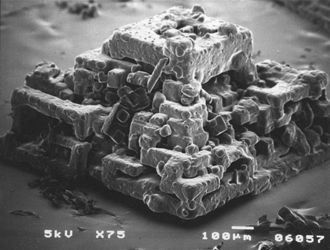
Kosher Salt Is A Superhero In Disguise
Did you know that kosher salt is actually a superhero in disguise? It may look like a simple seasoning, but it’s actually a powerful crime fighter, using its large, flaky grains to vanquish the evil forces of blood and other impurities from our meats. And when it’s not busy saving the world from “unkosher” meals, it’s using its high surface area and liquid-absorbing powers to transform mundane dishes into flavor explosions. If you’re feeling especially adventurous, grab a microscope and check out its secret identity: a team of tiny pyramids, ready to conquer any culinary challenge that comes their way. So go ahead, give kosher salt a try – your taste buds (and your inner superhero) will thank you. (Kitchn)
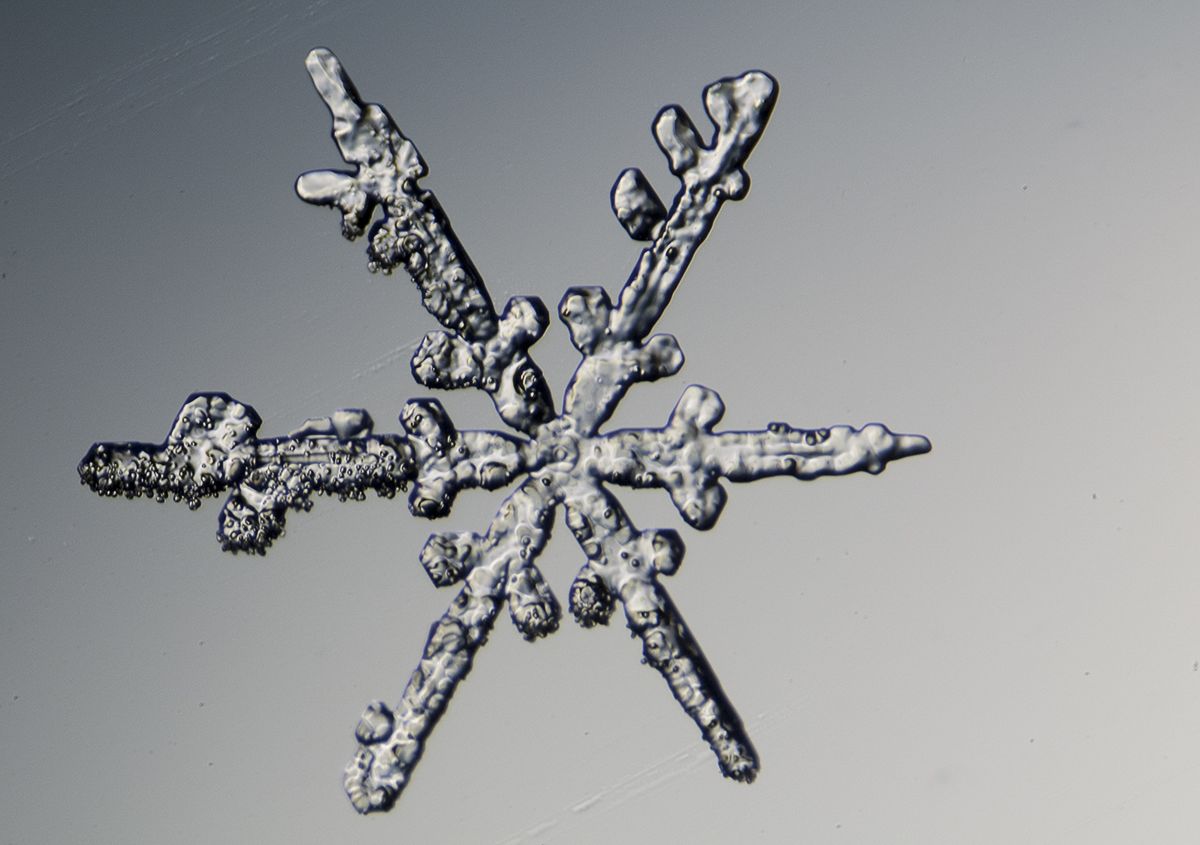
Just When We Thought Snow Couldn’t Get Any Cooler
If you’ve ever looked at a snowflake up close, you know that they are truly a wonder of nature. But have you ever seen a snowflake under a microscope? It’s like taking a trip to a winter wonderland on acid. The intricate patterns and shapes that make up each flake are truly mesmerizing, and it’s easy to get lost in their icy beauty. But don’t let their delicate appearance fool you – these snowflakes are tough as nails. They can withstand temperatures as low as -40 degrees Fahrenheit and still manage to look fabulous. So next time you’re feeling down on a cold, snowy day, just grab a microscope and take a closer look at these frosty miracles. You’ll be amazed by the scientific beauty that surrounds us, even in the dead of winter. (Cracked)
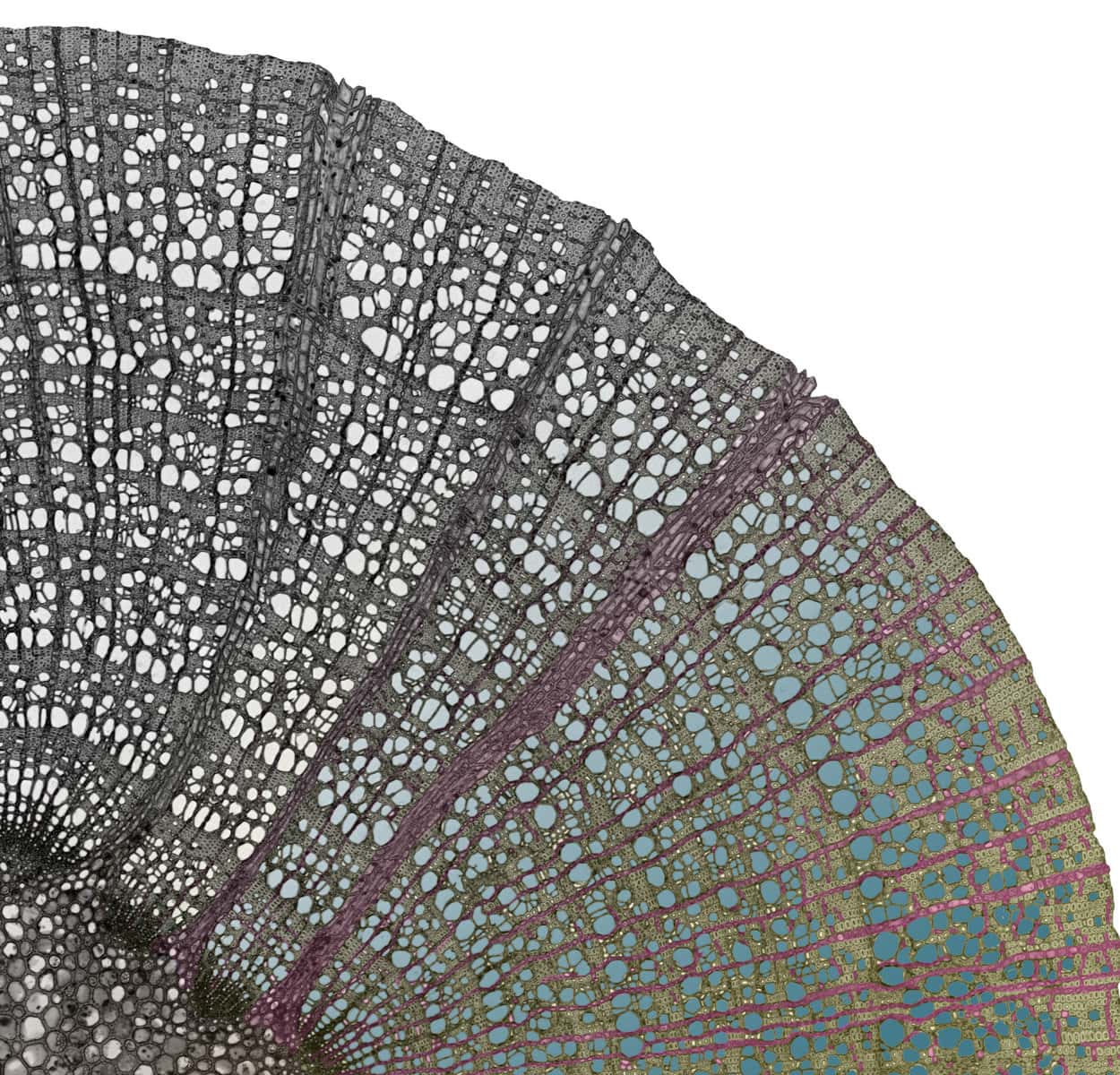
A Tree’s Hidden Beauty Through a Microscope
Looking at wood through a microscope is like taking a trip to a tree’s wildest dreams. The intricate patterns and shapes that make up each piece of wood are truly mesmerizing, and it’s easy to get lost in their natural beauty. But don’t let their rough exterior fool you – these wooden wonders are actually made up of tiny, super-strong fibers that work together to support the weight of the entire tree. And when it comes to seasonal fashion, wood has it all figured out. Its layers of cells act like a natural insulation system, keeping the tree warm in the winter and cool in the summer. (Knowable Magazine)
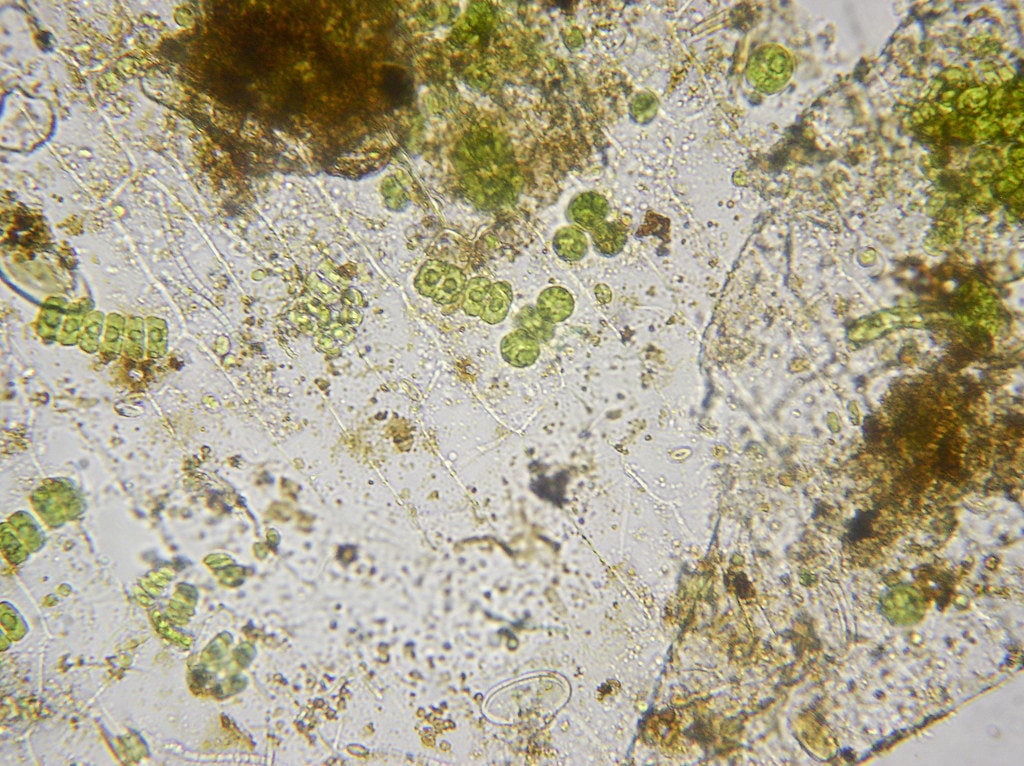
Maybe You Shouldn’t Dive Into Pond Water
There’s much more to pond water than meets the eye. It’s not only a murky body of water that frogs and insects love to inhabit. There’s a real jungle underneath the surface of pond water, and by looking at it under a microscope, you’ll be able to see just what it’s like. According to RSS Science, “we can divide all the pond water microorganisms into two groups: Protozoa (animal-like) and Protophyta (plant-like). Algae (singular, alga) are the majority of plant-like pond lives and exhibit a wide range of shapes. Some algae grow like green silks attached to rocks. Other single-celled algae float freely. Some big algae, such as the giant kelp, can grow up to 100 feet in length.” A lot is going on in every single cell of pond water to make that ecosystem thrive. Additionally, many microscopic animals we can’t see with our naked eye live in pond water (RSS Science)
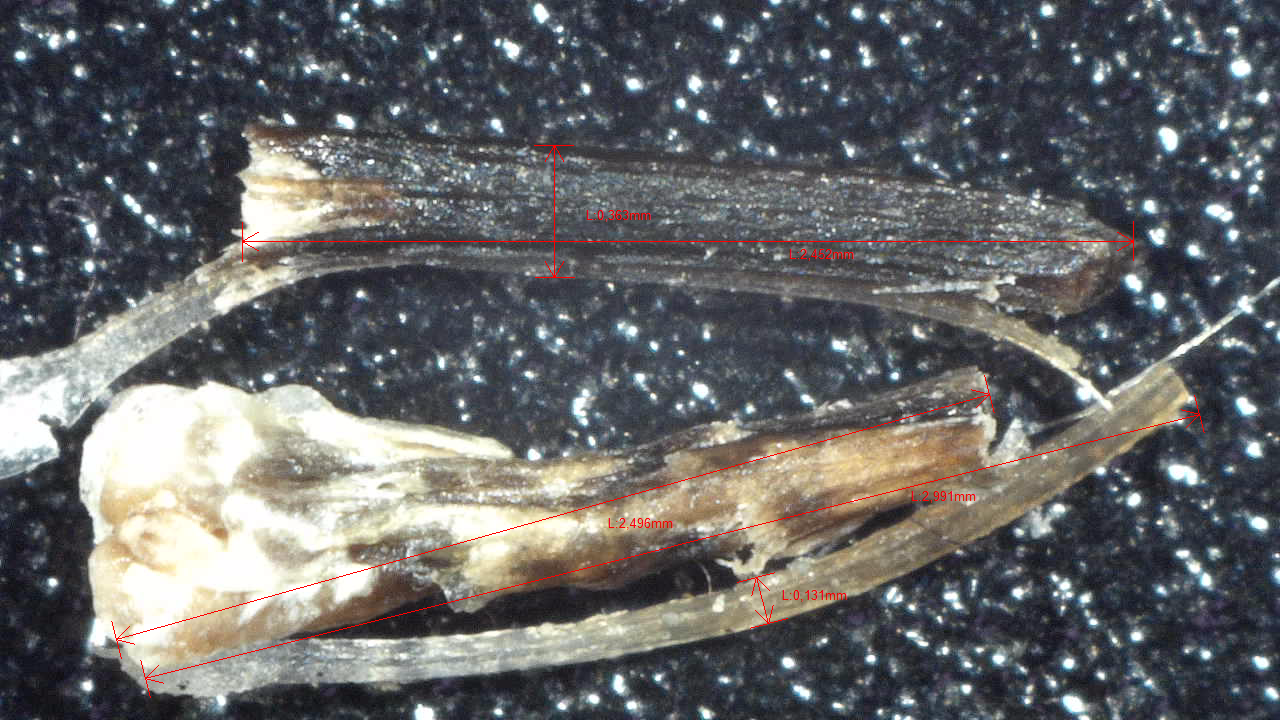
Beard Hair Is Truly Meant To Be Tough
Did you know that beard hair is actually much coarser and thicker than the hair on your head? This is because it is made up of a different type of keratin protein, which gives it its distinctive texture. In addition, beard hair has a much longer growth cycle than head hair, which means it takes longer to grow and may require more maintenance to keep it looking healthy and well-groomed. But don’t let its rough exterior fool you – beard hair is actually quite strong and can withstand a lot of wear and tear. In fact, some studies have shown that beard hair is more resistant to breakage and damage than head hair. In the past, France considered beard hair “boring” and would use the phrase: “C’est la barbe” translating to “It’s the beard”. Aka (it’s boring). But after learning about these beard facts, we can’t say it’s boring at all. (Gillette)
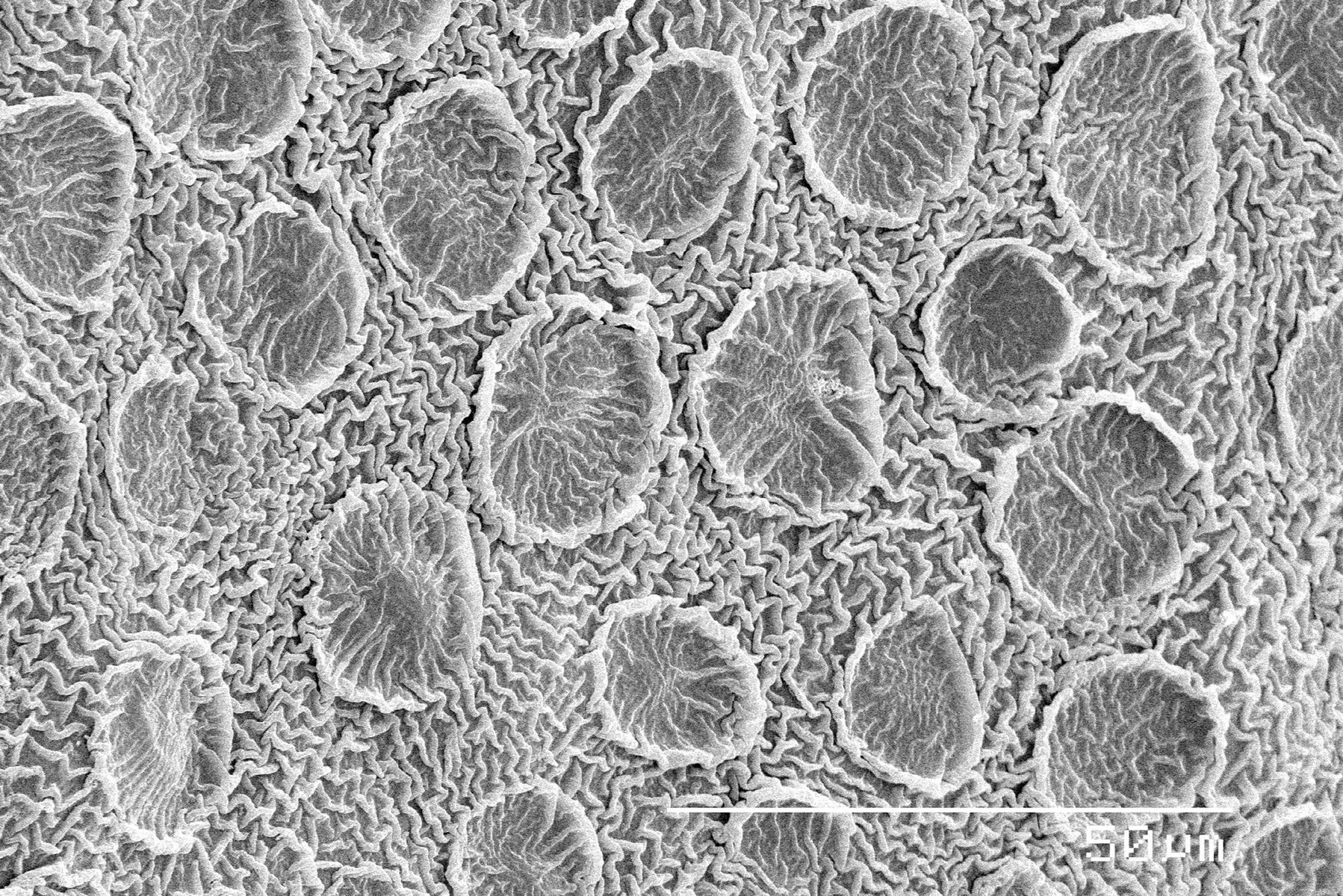
Roses Aren’t Just For Sniffing
Turns out, roses are actually cosmic powerhouses in disguise. It’s true! These beautiful flowers are able to harness the power of bright red light, reflecting it back at us in a dazzling display of color. But that’s not all – roses are also multi-talented, able to provide us with both delicious flavors and heavenly scents. Whether you’re snacking on rose petals or using them to add a touch of elegance to your home, these flowers are sure to impress. And when you take a closer look under the microscope, you’ll see that roses are even more amazing than you thought. With tiny glands that resemble spots on an animal’s fur, these flowers are truly one-of-a-kind. (RD)

Seawater
Just take a drop of seawater and examine it under a microscope, and you’ll be transported to a world of aquatic wonder. This one might be more fun to see live. Because everything you see here is probably alive and wiggling. From diatoms and plankton to bacteria and viruses, the ocean is home to an incredible array of tiny organisms that play vital roles in the planet’s ecosystems. And the best part? These microscopic marvels come in all shapes and sizes, from delicate, spiky-looking diatoms to wriggling, amoeba-like plankton. So next time you’re feeling curious, grab a microscope and dive into the depths of the ocean – you never know what amazing discoveries you’ll make. (Smithsonian Ocean)
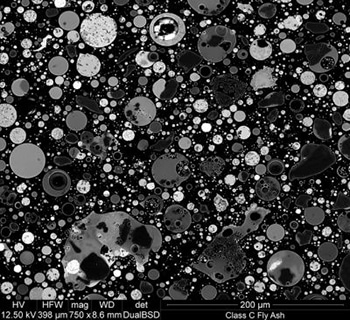
Fly Ash Is All Around Us
The only reason sidewalks, streets, and homes exist is because of fly ash. You’ve certainly seen it many times, but you probably didn’t recognize what you were looking at. It’s a bunch of ground-up coal that builders use to reinforce concrete. Even though we spend most of our time walking around cities on fly ash, make sure you stay far away. It’s highly radioactive. Looking at it under a microscope, you’ll notice it looks like another planet. It’s full of craters, differently-sized rocky islands, and an all-black surface. It looks like the next time we walk on fly ash, we’ll think of it very differently (Cracked).

Shrek Would Love A Closer Look At The Layers Of An Onion
Usually, we toss onion skins into the trash without giving them a second thought. And typically, we’re only thinking about onions for prolonged periods because of our breath after adding it to a dish… but onions are pretty special. The pungent smell of onions is caused by a chemical called syn-propanethial-S-oxide, which is released when the onion’s cells are damaged. And did you know that onions are actually related to lilies, sunflowers, and other plants in the Allium family? According to RSS Science, “onion skin cells are well-organized and uniform in shape because the plant cells have something, we (animal cells) do not have – the cell walls. The cell walls are made up of cellulose, which protects the cell and maintains its shape.” With Eosin Y added to the onion skin, you can see the nucleus.
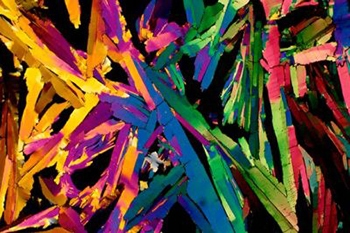
Isn’t Orange Juice Supposed To Be… Orange?
Usually, what you see is what you get. But that isn’t the case for orange juice. Usually, orange juice sells itself. It’s packed with nutrients and vitamins (Vitamin C, Potassium, and Folates, to name a few.) And the most obvious: It’s delicious. But whoever decided to put it under a microscope must have been shocked to see it’s more than meets the eye. Orange juice under the microscope is multi-colored and looks like a stained glass window. Surprisingly, it has green, blue, purple, yellow, orange, and red pieces that look like glass shards. But orange juice is NOT orange. Is this false advertising? (Researchgate)
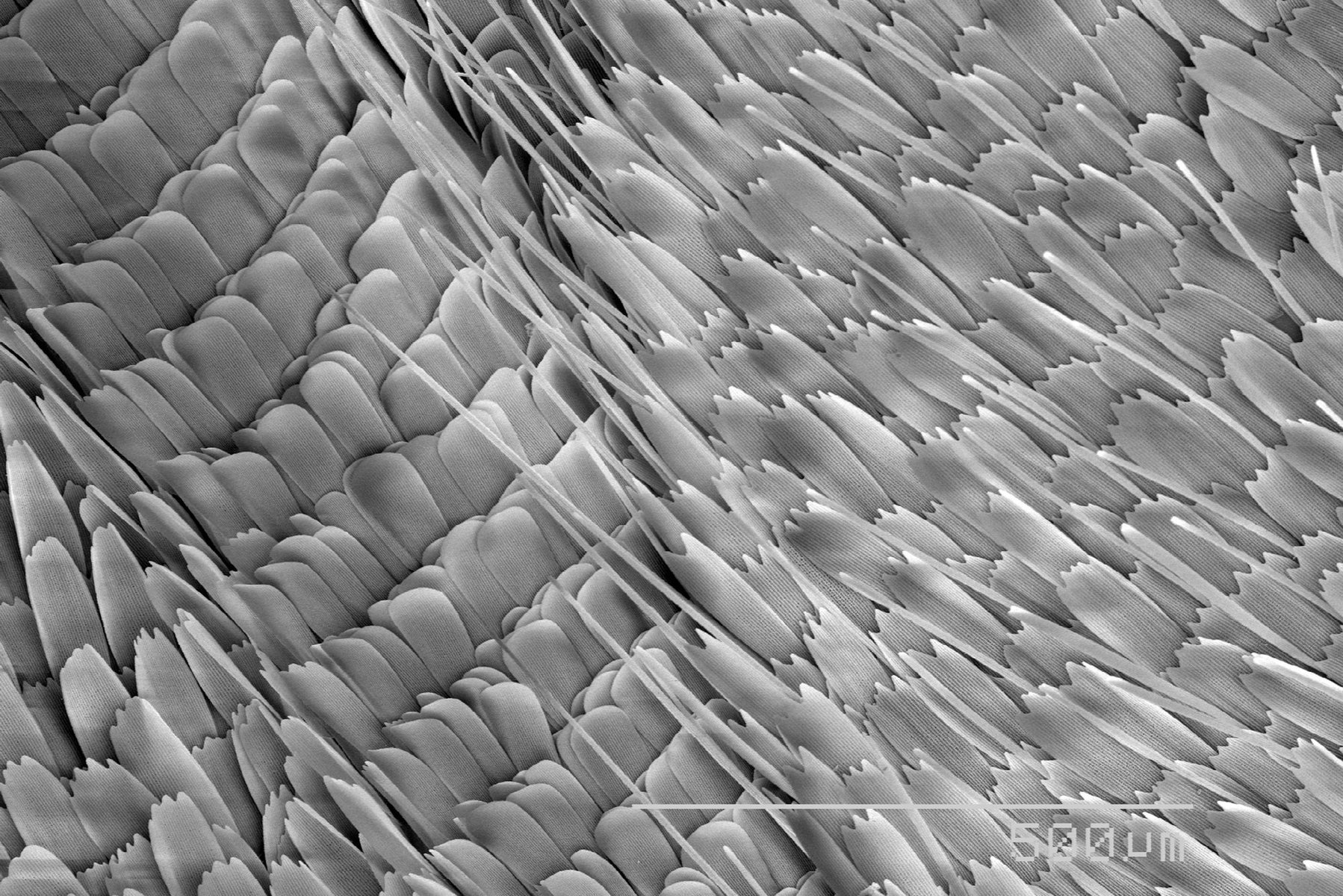
Butterfly Scales Look Tougher Than They Are
Butterflies are one of the most important species on our planet. They’re extremely sensitive to changes in our environment, which is why they’re so important for studying climate change. They also eat aphids and help control pests, animals, and other insects, and they’re important pollinators. Underneath a microscope, their scales look completely unrecognizable. At first glance, it looks like a zoomed-in photograph of a piece of corn. You can see every individual layer and scale. This is completely different than what we see with the naked eye, where we only see their bright colors and patterns (RD).
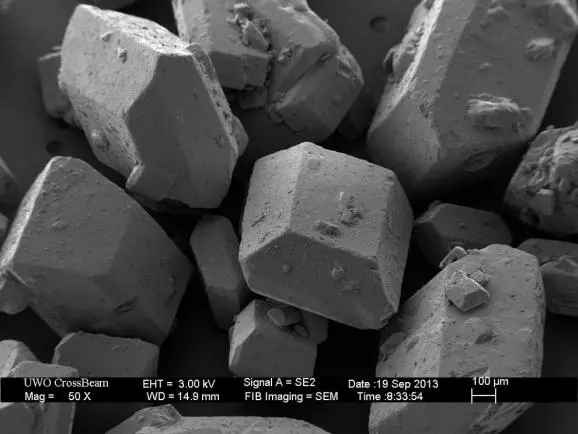
We’d Climb This Mountain of Sugar Crystals
Have you ever wondered how those delicate sugar crystals form in your favorite sweet treats? Sugar crystals are actually a type of solid called a crystal lattice. When sugar crystals form, the molecules of sugar arrange themselves in a repeating pattern, called a lattice. This lattice is made up of tiny, identical units called “unit cells.” Each unit cell is made up of molecules of sugar arranged in a specific way. The sugar molecules in a unit cell are held together by weak chemical bonds called van der Waals forces. When a solution of sugar and water is cooled, the sugar molecules start to arrange themselves into a crystal lattice. As more and more sugar molecules join the lattice, the crystal grows larger and larger. The size and shape of the sugar crystals depends on how fast the solution cools. If the solution cools slowly, the sugar crystals will have more time to grow, resulting in larger crystals. If the solution cools quickly, the sugar crystals will be smaller (Exploratorium).
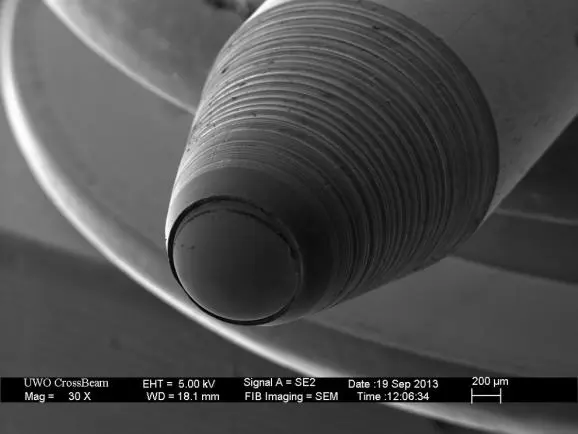
The Ballpoint Pen That Changed The World
The ballpoint pen is a humble but mighty invention that has changed the way we write and communicate. Invented in 1938 by Laszlo Biro (expanded on the design of John J Loud), the ballpoint pen features a tiny ball bearing in the tip that rolls over paper, allowing for a more precise and reliable writing experience. Prior to the ballpoint pen, fountain pens were the standard writing instrument. But they were prone to leak and required constant refilling. Today, the ballpoint pen is the most popular writing implement in the world, with billions produced and sold annually. Its simple yet effective design has stood the test of time, making it a staple in offices, schools, and homes around the globe (BBC).
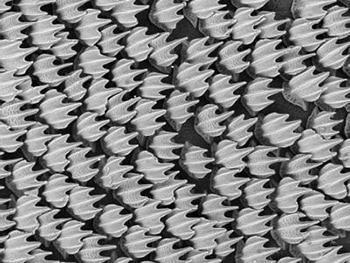
Shark Skin Is Basically Nature’s Coolest Armor
Shark skin is a marvel of nature that has fascinated scientists and the general public alike. Covered in tiny scales known as dermal denticles or placoid scales, shark skin is a tough and durable surface that helps these formidable predators glide through the water with ease. The scales are made of dentin, a hard tissue similar to the material found in our own teeth, and are arranged in a pattern of overlapping plates. This unique structure creates a series of grooves and ridges on the surface of the shark’s skin, which reduces drag and increases the animal’s efficiency in the water. But that’s not all – these scales also serve as armor, protecting the shark from parasites and other skin irritations. (Smithsonian)

Dust Bunnies Are Clearly Tangly Messes (That Are Destroying Your Air Quality)
Dust bunnies – you know them, you love them (jk, you probably hate them). These little balls of fluff are a common sight in many homes, lurking in corners and under furniture, just waiting to jump out and surprise you. But where do they come from, you ask? Well, dust bunnies are formed when dust and other small particles become trapped in fibers or corners, and are then moved around by air currents or other forces. Over time, these particles can accumulate and form into little balls, ranging in size from a few millimeters to several inches in diameter. These balls, also known as “fuzzballs,” are usually made up of a mixture of dust, lint, pet hair, and other small particles, and can be found in any space where dust tends to accumulate. While they may be cute and fluffy, dust bunnies can also contribute to indoor air pollution. At least they’re cool to see up close? (Wonderopolis).
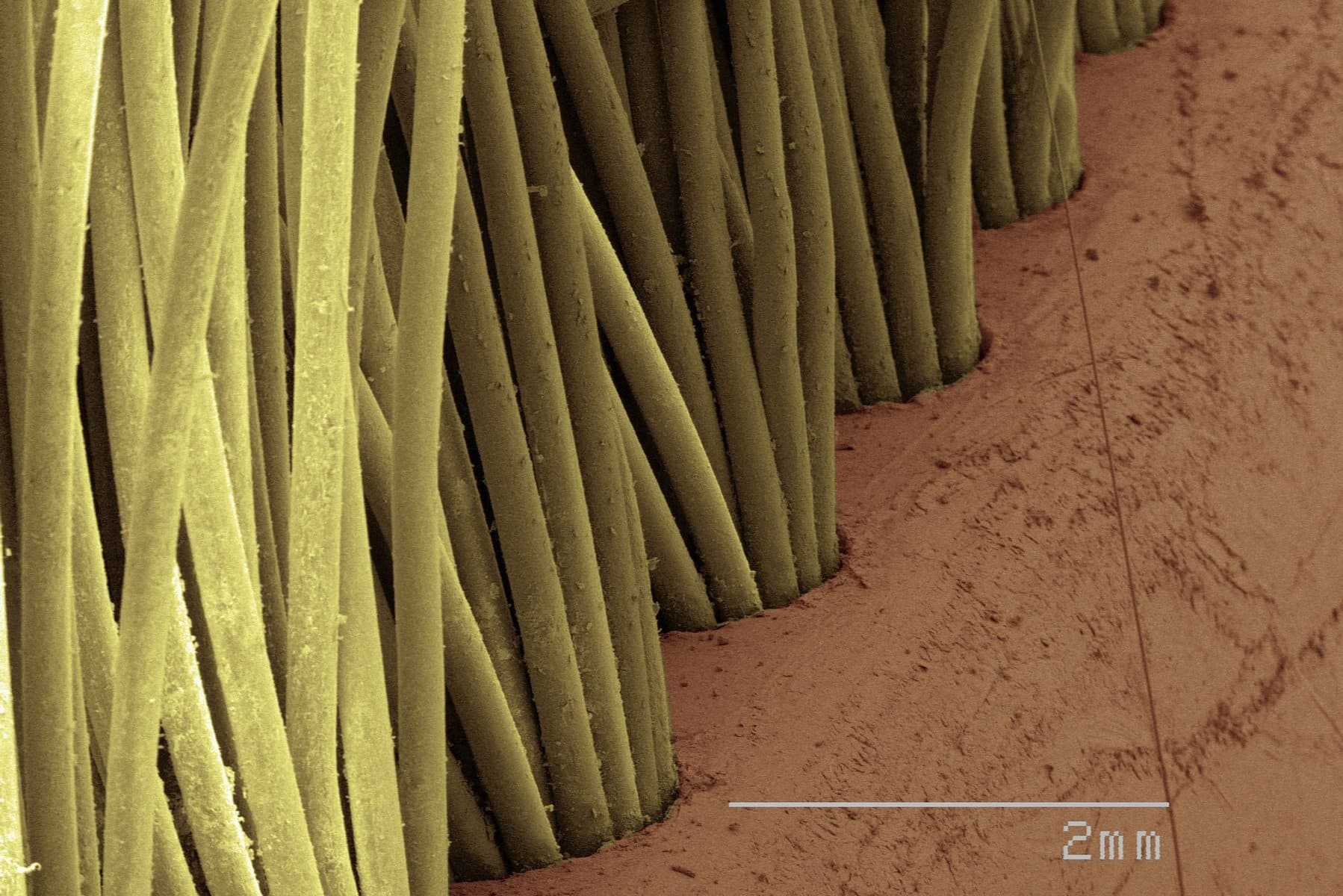
Toothbrush Bristles – Don’t Think About Them, Just Brush
This close up doesn’t exactly make you want to use a toothbrush. We don’t know if this is a used or unused toothbrush. Just try not to think about this image while brushing. The earliest people cleaned their teeth by chewing on bark or fish bones, dating back nearly 2,500 years. It’s recommended we brush our teeth three times per day instead of the usual two. According to Prevention, a study found that “people who brushed their teeth at least three times a day had a 12% lower risk of developing heart failure and a 10% lower risk of developing atrial fibrillation.” Even if this image disturbs you, those stats will make you look past it and pick up the toothbrush. (RD).
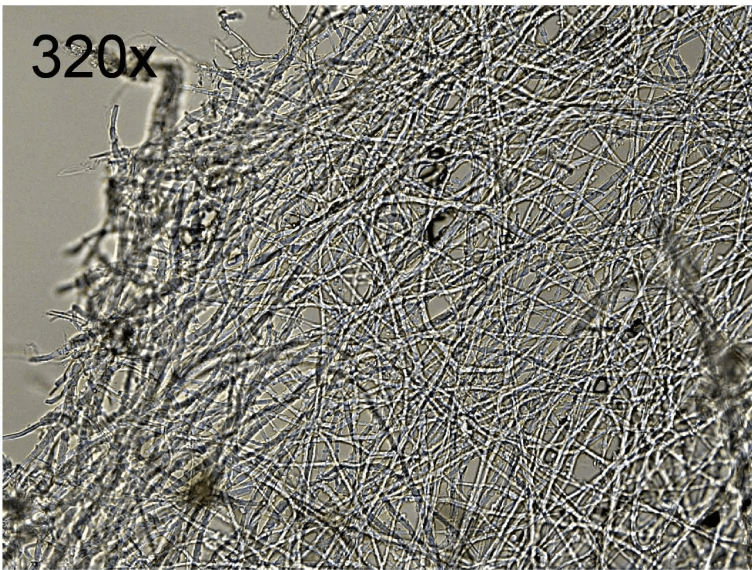
Eggshells And Human Hair Is Oddly Similar
Whenever you peel a hardboiled egg, you’ve probably noticed a thin film attached to the inside of the eggshell. Eggshells contain two membranes that help defend against invasion from bacteria, fungi, and viruses. The layers are strong and made of keratin, which is what we also have in human hair. Underneath a microscope, eggshell membranes look like human hair. Eating eggshells is also a great way to meet your calcium needs for the day, which you can get by making eggshell powder. It’s well absorbed and does a great job at strengthening the bones (RSS Science).
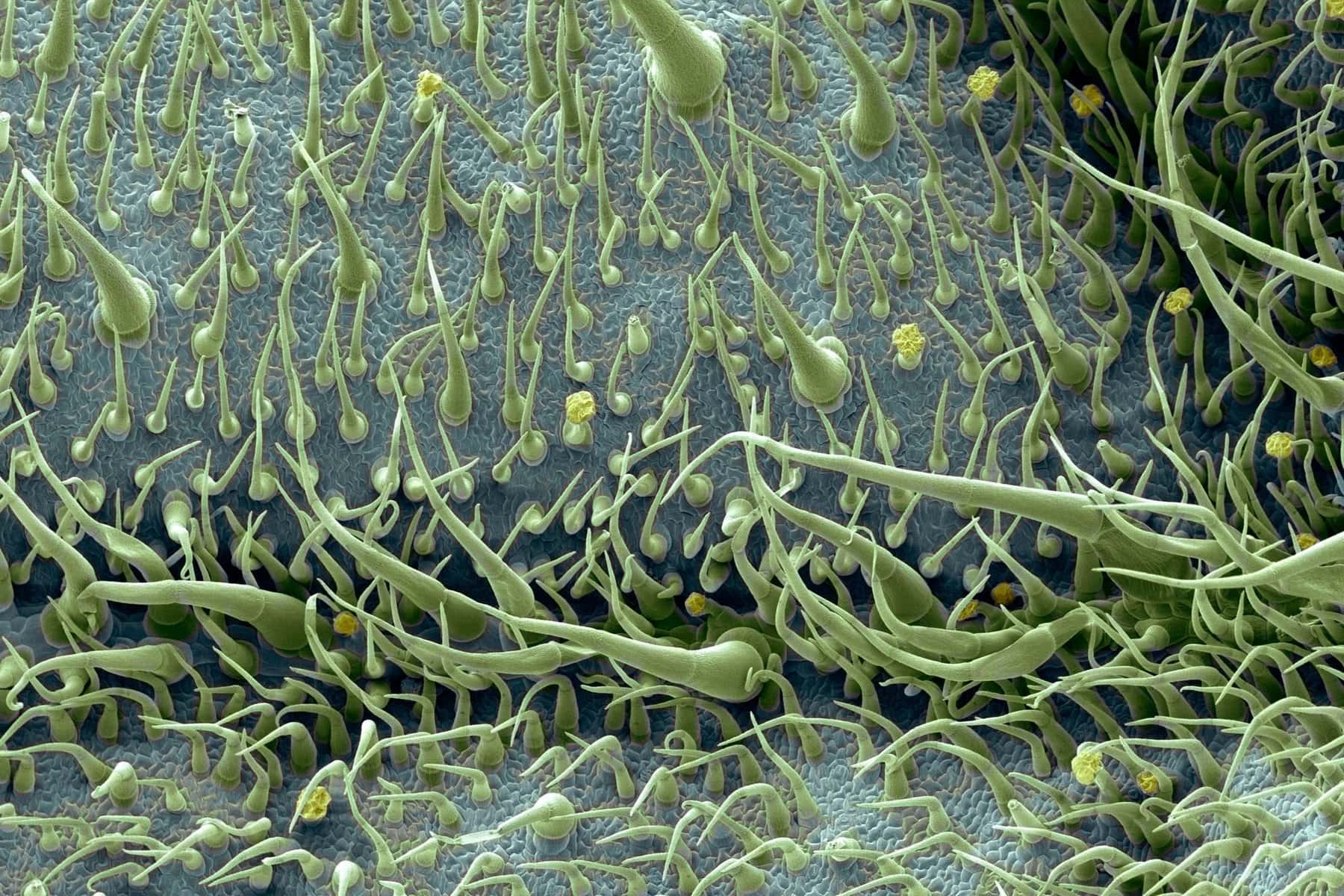
Tomato Leaves Look Like An Alien Species
The intricate, beautiful design looks like it’s something from a fairytale land. But don’t let the beautiful patterns fool you: tomato leaves can be toxic. They’re in the nightshade family. Tomato leaves are generally considered toxic and should not be consumed. The leaves of the tomato plant contain small amounts of solanine, a poisonous compound that can cause nausea, vomiting, and other symptoms if ingested in large quantities. Solanine is found in all parts of the tomato plant, but is most concentrated in the leaves and stem. While the ripe fruit of the tomato plant is safe to eat, the leaves and stem should not be consumed, as they can cause digestive upset and other health problems. It is always best to err on the side of caution and avoid consuming any plant parts that you are unsure of. (RD).
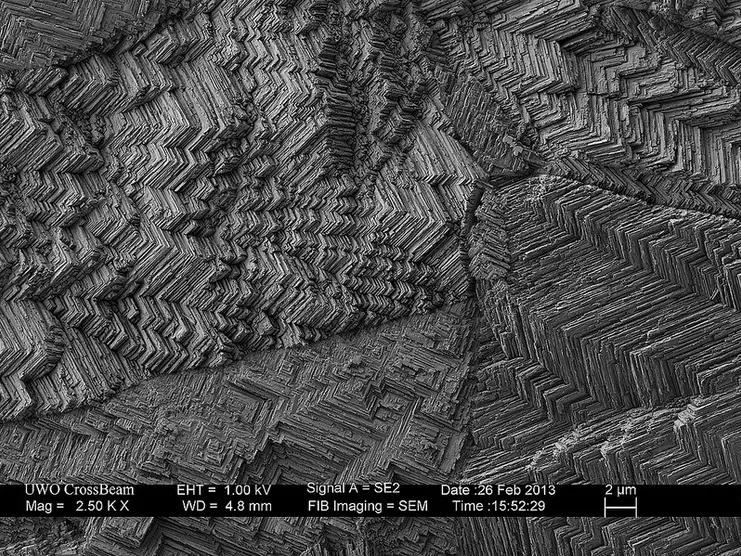
Maybe You’ll Have Good Luck After Looking At This Microscopic View Of The Penny`
See a penny pick it up, all day long you’ll have good luck! It’s debatable whether this old-time myth is true, but either way, pennies have been around for centuries. According to US Mint, “the penny was one of the first coins made by the U.S. Mint after its establishment in 1792. The design on the first penny was of a woman with flowing hair symbolizing liberty. The coin was larger and made of pure copper, while today’s smaller coin is made of copper and zinc.” Underneath a microscope, they’re quite beautiful and look nothing like the bronze circular shape most of us toss to the side of the road or forget about on the bottom of our purses. It has layers and layers of zigzags and lines that could be a piece of art (Futurism).
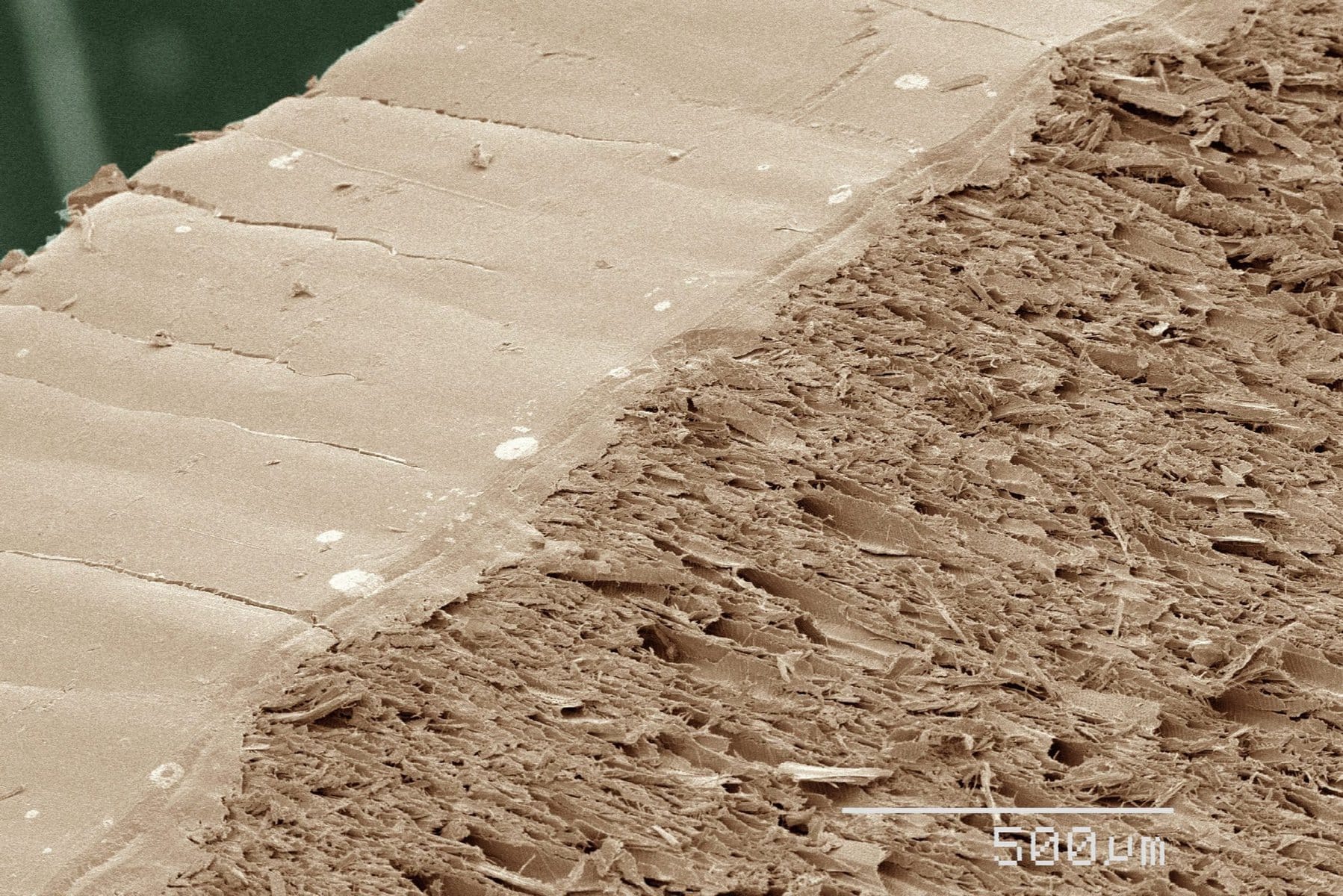
Who Knew A Pencil Tip Was a Microscopic Beach?
As you can see from this photo, underneath a microscope, the tip bleeds graphite onto paper. The pencil was invented in 1795 by Nicolas-Jacques Conté, and since then, the seemingly mundane tool has grown to be one of the most used tools in the world. Underneath a microscope, it looks nothing like it does when we use it to write on paper, it almost resembles a beach with sand and coral. Either way, that is a photograph of something that’s able written on paper and then disappears with the mere stroke of an eraser (History of Pencils).
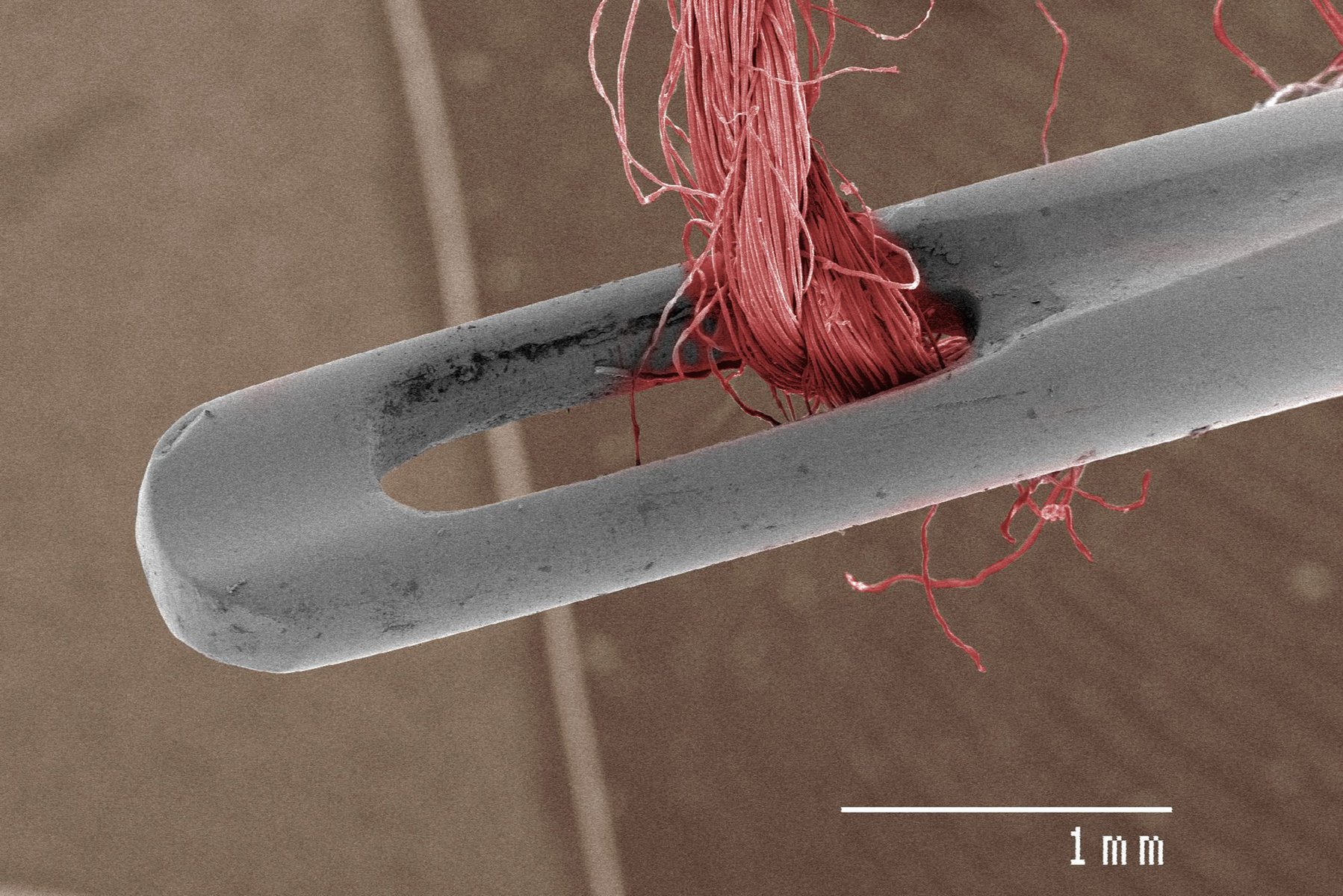
We Wish Threading A Needle Was As Easy As It Looks Here
It always feels like an impossible task trying to slip thread through the tiny hole in the needle. But under a microscope, it seems like an easy task that makes us feel like fools. The microscopic image doesn’t even look real. Every fiber is on display. Because the thread is flimsy, it’s hard to control it to stick it through the hole. Here’s a pro tip: try holding the thread and needle against a white background, cutting the thread using sharp scissors, and using tweezers to help pull the thread through the hole (RD).
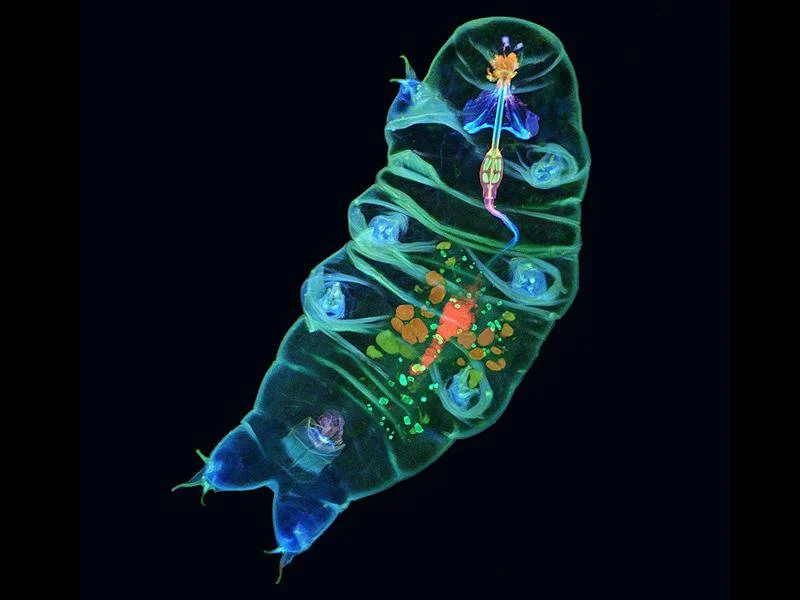
Water Bears Look Like They’re Probably In the Gummy Bear Family
The official name of water bears is Tardigrades. They’re super-animals that can survive extremely high and low temperatures, dehydration, low pressure, and high radiation. If the end of the world happened tomorrow, these guys would likely survive, while everything else on the planet would get destroyed. They’re microscopic animals with eight legs and four to eight claws. Underneath a microscope, you can see them swim or crawl. Just because we don’t see them with the naked eye doesn’t mean they’re hard to find. They’re everywhere, and that includes ferns, lichens, soil, beaches, moss, dunes, and other damp habitats (RSS Science)
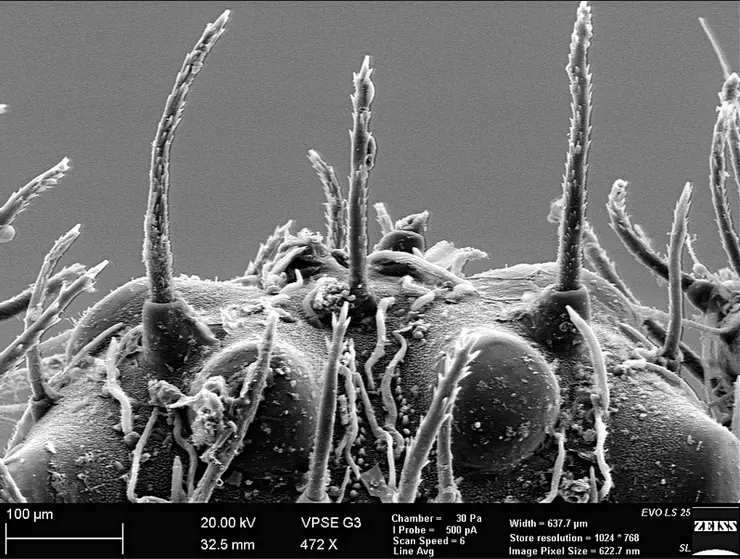
Spider Head’s – No, Nope, Absolutely Not
Spiders are terrifying enough on their own. Under a microscope, though, they look like terrifying creatures that are about to take over the world and make every human regret ever killing a spider. According to NC Gov, we can see the spider’s “cephalothorax, the fused head, and thorax also called the prosoma. It contains the brain, jaws, eyes, stomach, and leg attachments.” Next time you see a spider crawling around your house, think before you kill it. They play a huge role in keeping other pesky insects in check and are important predators.
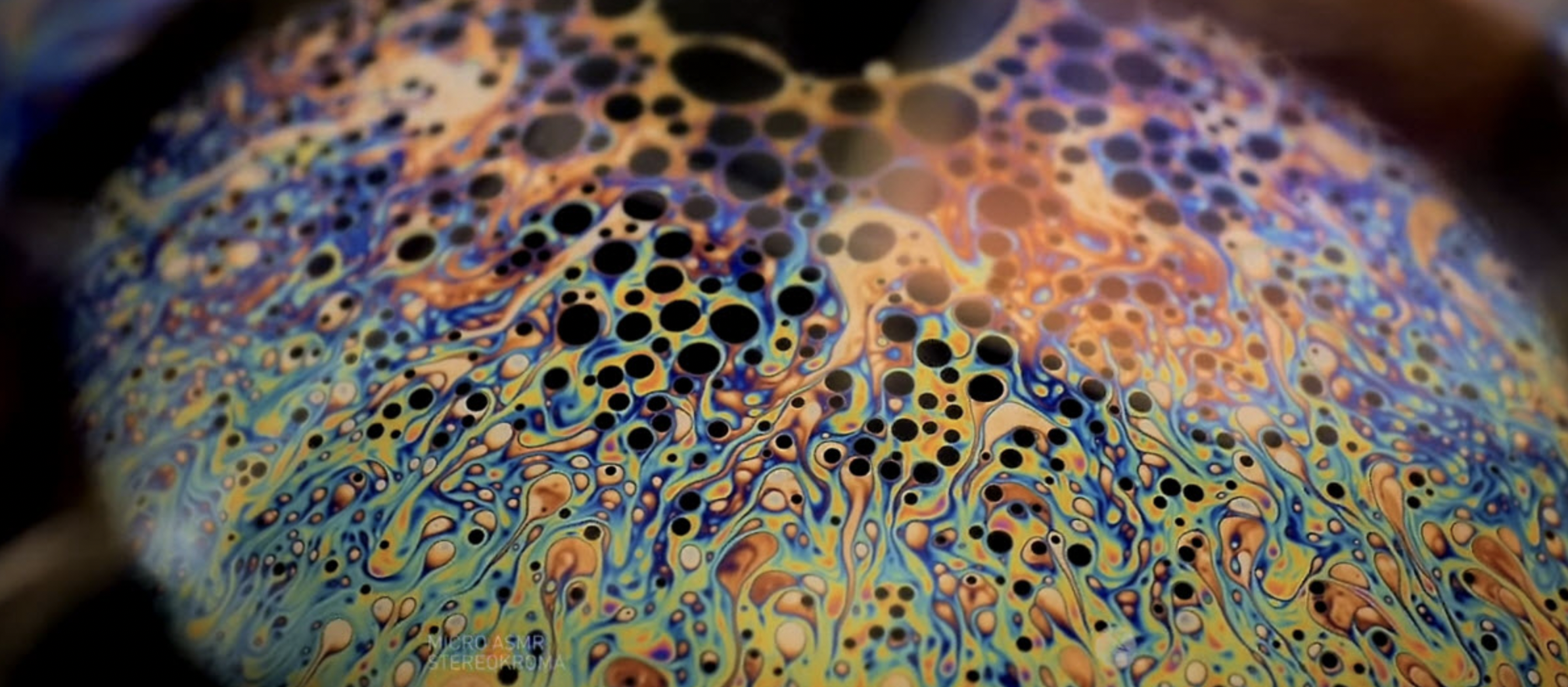
Soap Foam Is A Trippy Dream
We see soap foam lathered all over our bodies, not underneath a microscope. But it’s an amazing everyday item to look at underneath a microscope. You don’t only have to use body soap, you can also use laundry detergent and dishwasher soap. Underneath a microscope, you’ll notice the foam is made of many unstable bubbles. According to RSS Science, “some of them will move in a direction. Some of them will collide and fuse into a bigger bubble. Some of them will suddenly burst.” If you get soap under a microscope, you can play around with the different sizes and types to get something spectacular.
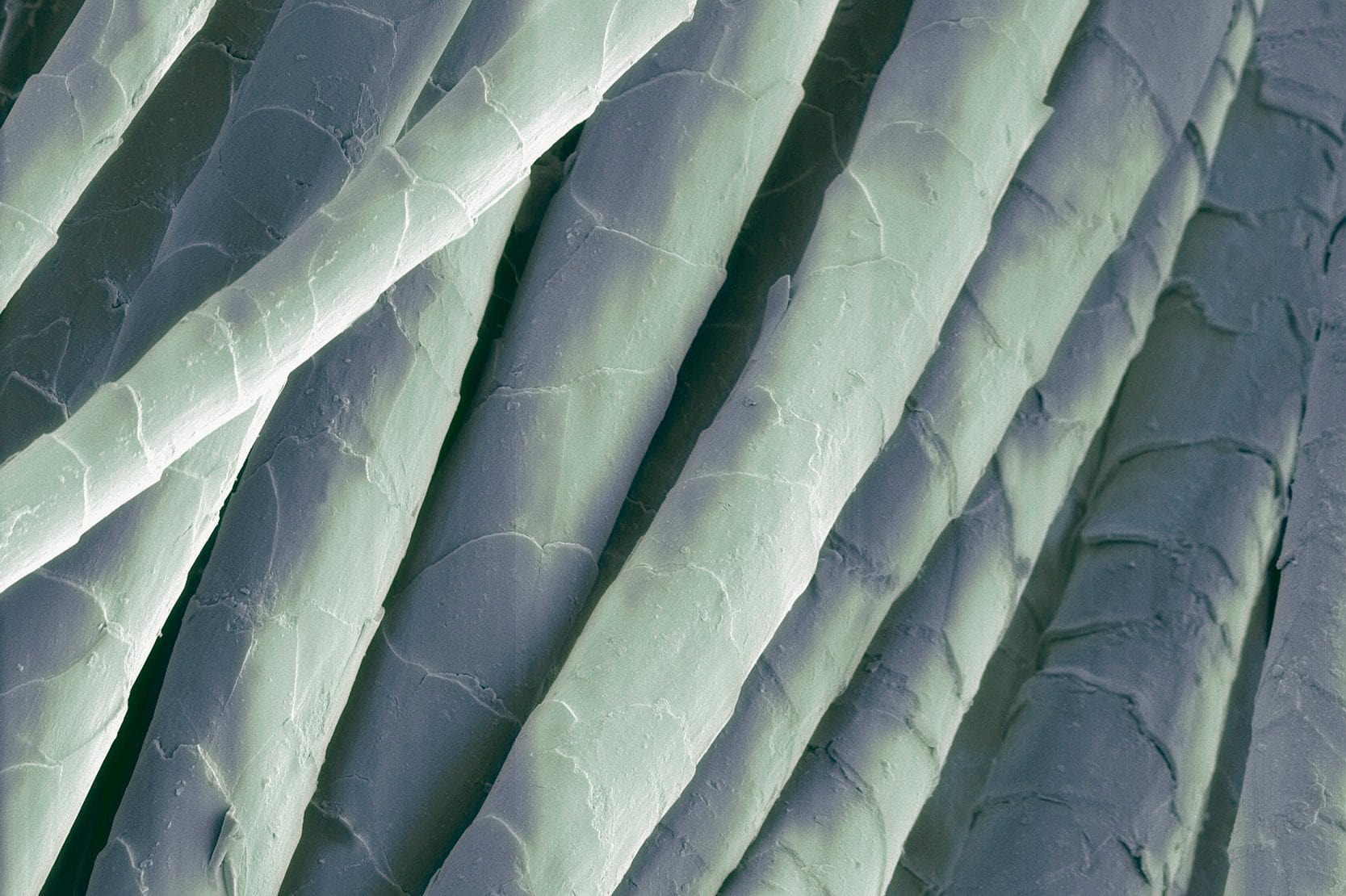
Cashmere
Underneath a microscope, cashmere looks exactly like bamboo. It also resembles human hair in an eerily similar way. It is made from the undercoat of the Cashmere goat, a breed that is native to the Himalayan region of Kashmir. The fibers of Cashmere wool are finer, softer, and stronger than regular sheep’s wool, and are also more insulating, making it a popular choice for clothing and other items. It is a luxurious and highly prized material, and is often more expensive than other types of wool. Cashmere even gets softer with age – unlike humans (RD).
